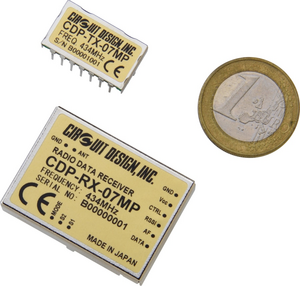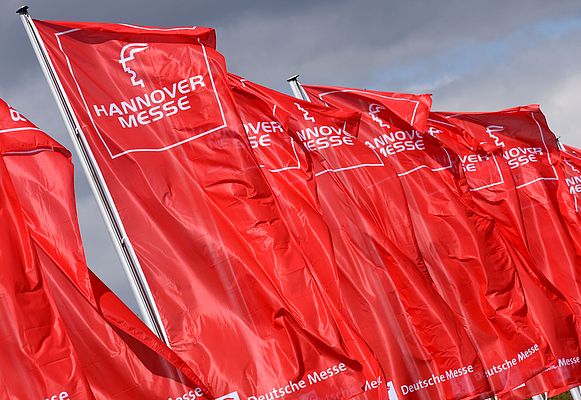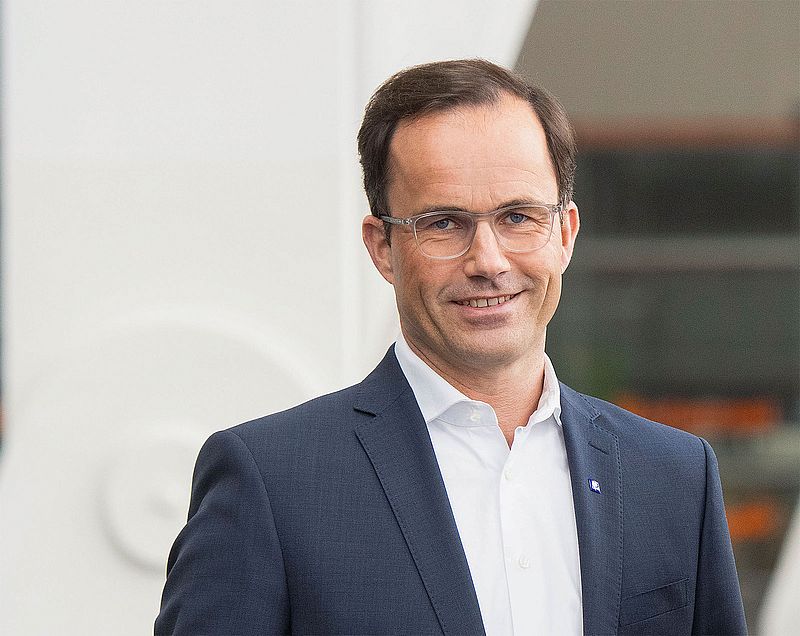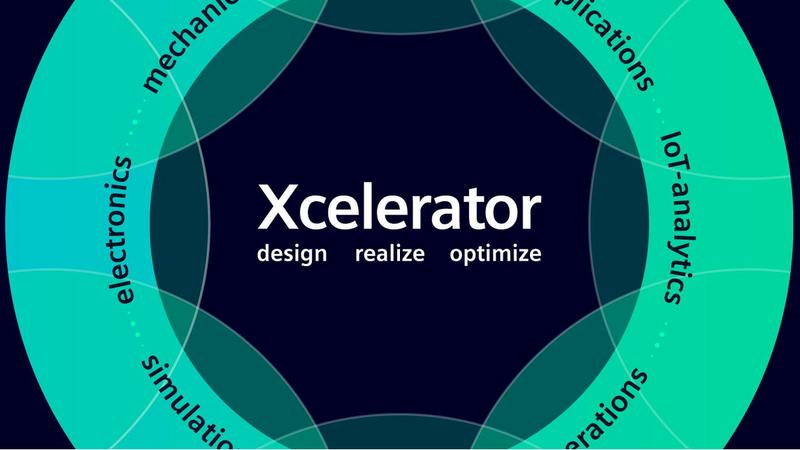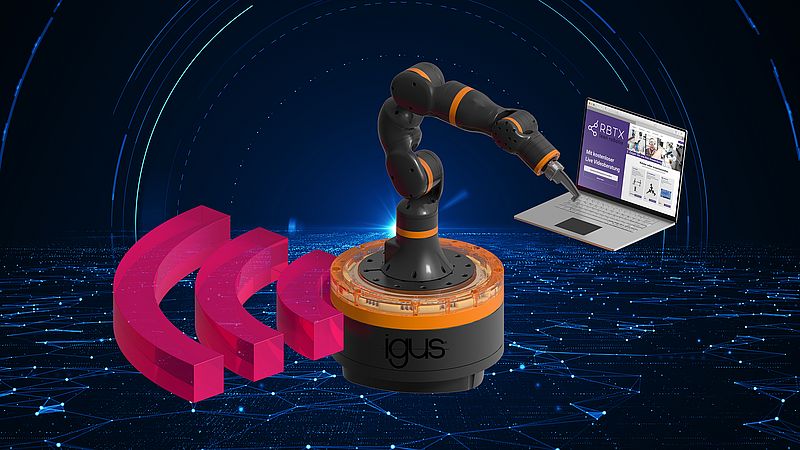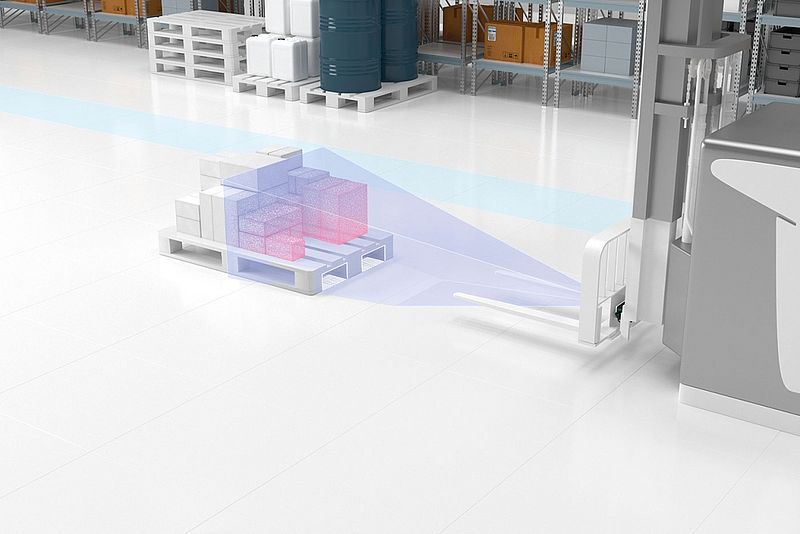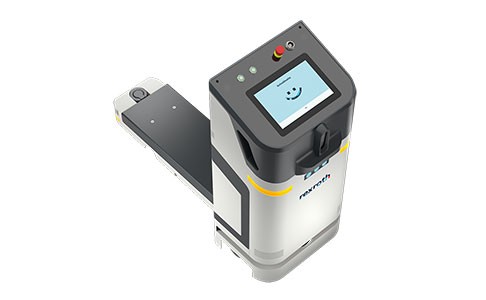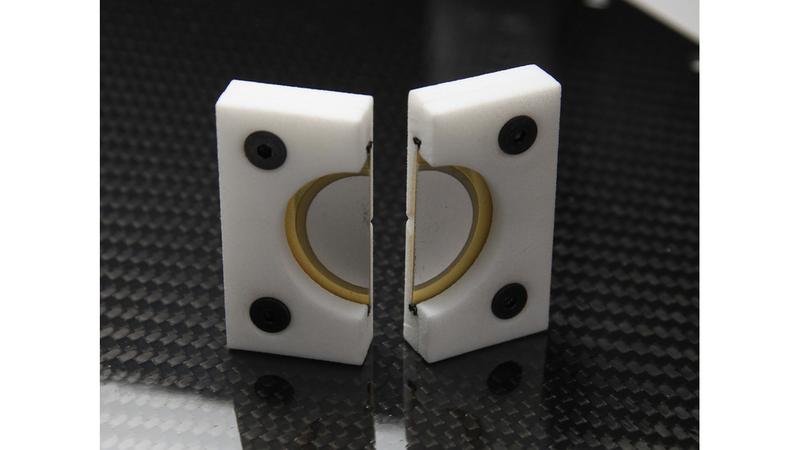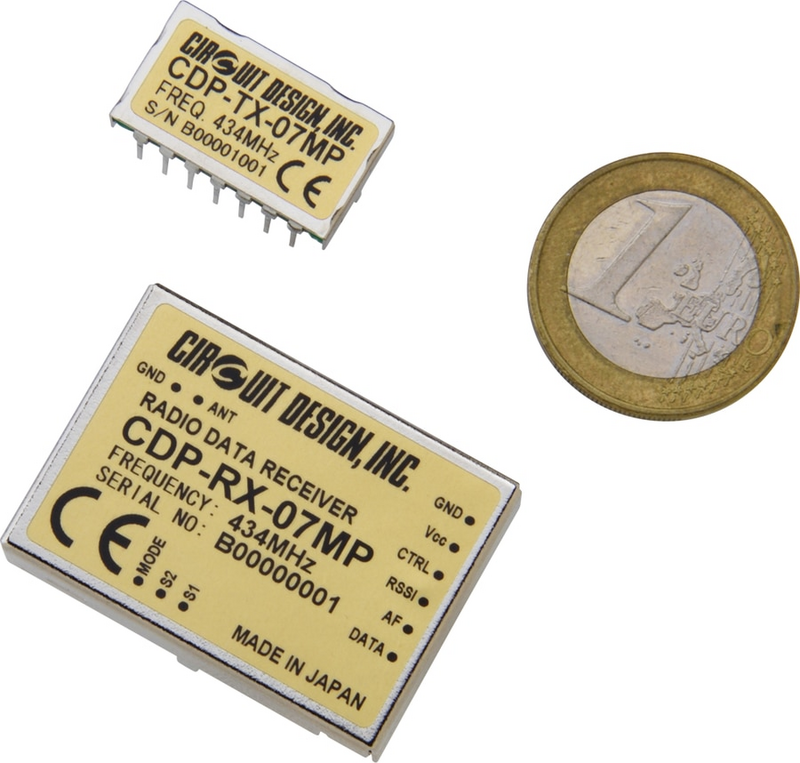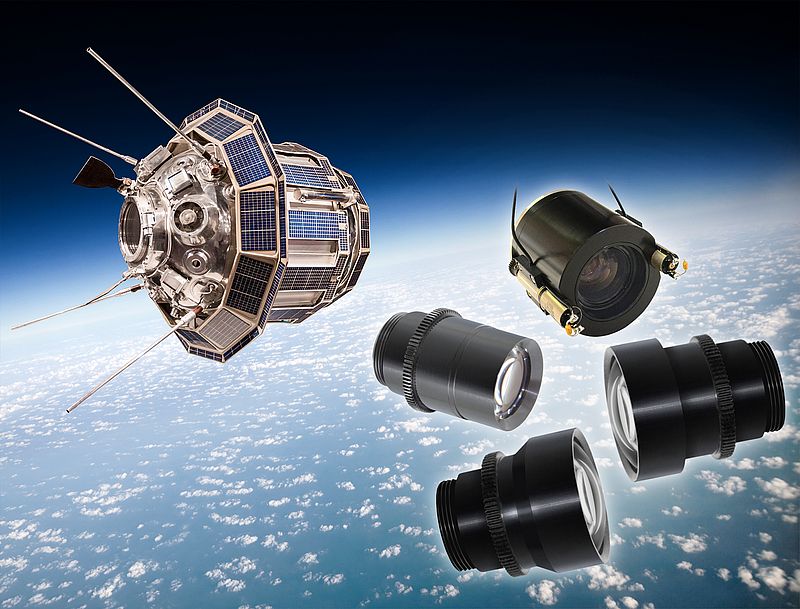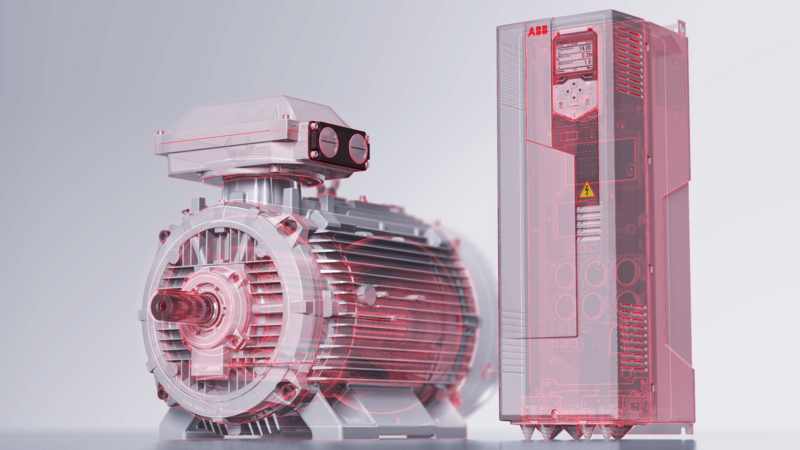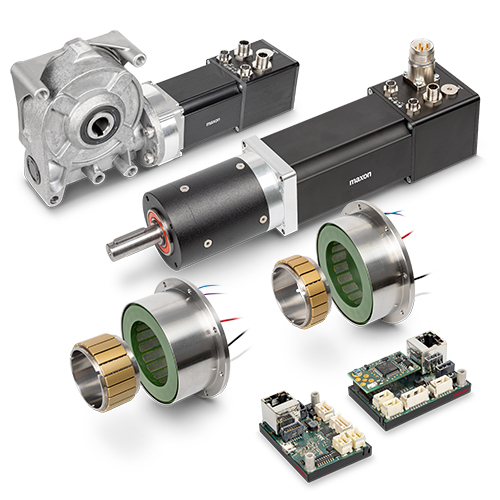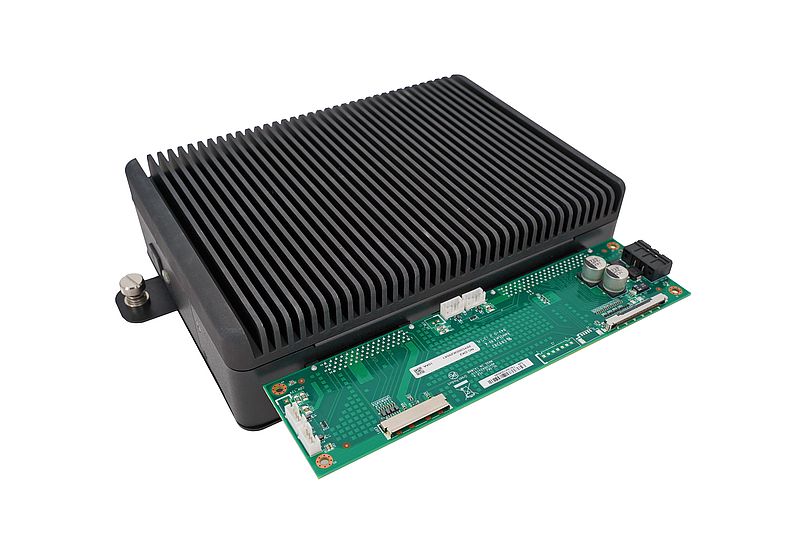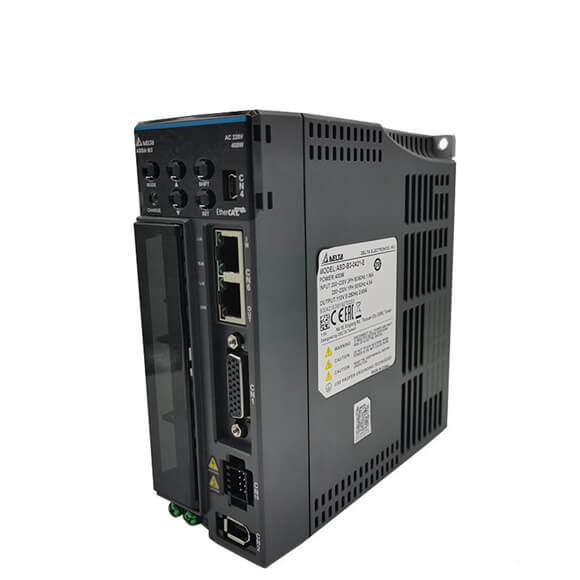Quick access
Hannover Messe is Back!2 Exclusive Interview3 Siemens & Procentec at HM 20224 Omron at HM 20225 Product News6 Product News7 Product News8 Product News9 Product News10 Product News11 Product News12 Product News13 Hannover Messe 202314 Contacts15 Index16Companies in this issue
Circuit Design Inc.9 Dr. Fritz Faulhaber GmbH & Co. KG8 Maxon International AG11 Resolve Optics Ltd910 10 ABB Schweiz AG11 Circuit Design Inc.9 Delta Electronics (Netherlands) B.V.13 Deutsche Messe AG2 Distec GmbH12 Dr. Fritz Faulhaber GmbH & Co. KG8 ifm electronic gmbh6 igus GmbH6 Maxon International AG11 OMRON ELECTRONICS GmbH5 Pepperl + Fuchs SE13 Pepperl+Fuchs SE7 Procentec4 Resolve Optics Ltd9
Hannover Messe is Back!
HANNOVER MESSE, the world’s leading trade fair for industrial technology run from 30 May to 2 June 2022 in Hannover, Germany, as a physical event. Get your full access to the show!
HANNOVER MESSE next edition will take place from May 30 to June 2, 2022 in Hannover, Germany. Its lead theme “Industrial Transformation” focuses on digitalization and sustainability and unites the exhibit categories «Automation, Motion & Drives», «Digital Ecosystems», «Energy Solutions», «Engineered Parts & Solutions», «Global Business & Markets» and «Future Hub». Leading topics include digital platforms, Industry 4.0, IT security, CO2-neutral production, artificial intelligence, lightweight construction, and Logistics 4.0. Conferences and forums complement the program. Portugal is Partner Country in 2022.
Digitalization and sustainability are the key topics at the trade, promoting more climate protection in business and industry and clearly illustrating how digitalization, automation and regenerative energies can collectively contribute. After the long pandemic-induced break, HANNOVER MESSE runs as a face-to-face event.
Sign up for free: IEN Europe offers you the opportunity to register for a Free User Account to attend the event digitally and get full access to the show.
HANNOVER MESSE 2022: Ensuring Security of Supply and Growth in a Dynamically Changing World, While Counteracting Climate Change
The topics to be discussed this year are more relevant than ever. Kay Petermann from IEN D-A-CH interviewed Dr. Jochen Köckler, Chairman of the Managing Board, Deutsche Messe AG, on the comeback of the fair as a live event.
Dr. Jochen Köckler is Chairman of the Managing Board of Deutsche Messe AG based in Hannover, Germany. He was appointed to the Board on April 1, 2012, and took over the chairmanship on July 1, 2017. Jochen Köckler also manages the global Industry, Energy & Logistics division within HANNOVER MESSE and its worldwide industry events as well as the business unit IT & Services and Finance & Legal.
IEN D-A-CH: After a two-year pandemic break, HANNOVER MESSE will take place again as a live event from May 30 to June 2. What can visitors expect and what is on offer for those who, for various reasons, cannot yet visit the trade fair again?
Dr. Jochen Köckler: The pandemic led us to focus more on the digitalization of our own products. We learned many lessons from last year's digital HANNOVER MESSE that we have built into the 2022 event. For example, our networking tool enables all trade fair participants to connect digitally in advance of the event, exchange ideas and arrange on-site or virtual appointments. We will livestream all forums, so visitors who cannot be there in person can still actively participate in the fair. We have also developed virtual guided tours for precisely this target group – digital visitors can experience the exhibits and highlights without being at the exhibition center.
The high level of internationality among visitors and exhibitors has always been one of the special, positive characteristics of HANNOVER MESSE. What is the status of exhibitors this year and what do you expect from visitors?
We will experience an international show again this year, both on the exhibitor and on the visitor side. We have received a large number of registrations from Italy, Turkey and, of course, Portugal. The USA and South Korea are also well represented, and we expect many exhibitors from France, Spain and Poland.
The lead theme of the fair is “Industrial Transformation”, which has been topical for the last few years but currently gained momentum from developments such as the unending pandemic, threats of disruption to industrial supply chains and the Ukraine war and associated threats. What impulses do you expect that can emanate from the trade fair and exhibitors in the field of industrial production?
In view of the current global political situation, the topics at HANNOVER MESSE are more relevant than ever. At the core, it is about ensuring security of supply and growth in a dynamically changing world – politically, ecologically and economically – and at the same time counteracting climate change. Innovative technologies will play a key role here.
What about decarbonization, hydrogen and the circular economy? These are also well-established, important topics for HANNOVER MESSE.
When it comes to CO2-neutral production and energy security in Europe, renewable energies and green hydrogen play a key role. Many companies are already moving forward with concrete solutions, including corporations such as Bosch or Siemens, but also medium-sized companies.
Due to the current energy crisis, the topic of hydrogen is becoming increasingly important at HANNOVER MESSE. We have offered the largest European platform for the hydrogen and fuel cell industry there for years. In Hannover, more than 200 companies present solutions for a sustainable energy supply using hydrogen from renewable energies, including Iberdrola, Saint Gobain, Emerson, ElringKlinger, Plug Power, Siemens, Phoenix Contact, Enapter, Bosch, Hexagon Purus, Nel Hydrogen, Hydrogenious, and GP Joule.
In view of the scarcity of raw materials, the topic of circular economy is also becoming increasingly important at HANNOVER MESSE.
In the past, the supporting program of the trade fair and the accompanying congress events were an important starting point for advancing topics and discussions. What can visitors expect this year, online and offline?
For the first time, we will stream all forums live so that all visitors, whether on site or digitally, can watch the individual lectures. The exhibition center features four stages. The Main Stage in the H'Up studio hosts economic policy discussions. The Industry 4.0 Stage in Hall 8 covers topics such as automation and sensor technology, cloud and infrastructure, data analysis and management, digital platforms, robotics, IT security, AI and machine learning, and the circular economy.
On the Energy 4.0 stage in Hall 12, experts discuss the latest trends and solutions for an energy-intelligent future. The tech transfer stage in Hall 2 fosters exchange between science, business and politics and highlights the latest projects in applied industrial research. The focus is on the direct exchange of information, successful technology transfer and discussing solutions to the challenges of tomorrow's industry.
With the choice of Partner Country Portugal, the trade fair has again made an interesting choice. How many exhibitors from the partner country are expected to be there and which topics will be in the foreground?
At HANNOVER MESSE 2022, Portugal presents itself as an international technology partner and encourages investments from abroad. We can learn from Portugal in many areas. For example, around 80 percent of the electricity in Portugal already comes from renewable energies. The country is interesting for many international startups. In Hannover, more than 100 Portuguese exhibitors will present their technologies and processes in a central pavilion and in three thematic pavilions in the areas of Engineered Parts & Solutions, Energy Solutions and Digital Ecosystems.
Kay Petermann, IEN D-A-CH
Sign up for free: IEN Europe offers you the opportunity to register for a Free User Account to attend the event digitally and get full access to the show.
Comprehensive Software for the Digital Enterprise
For aerospace, automotive or industrial machinery
Automation, Industry 4.0
Xcelerator from Siemens Digital Industries Software is a comprehensive, integrated portfolio of software, services and an application development platform. Siemens' software solutions support an array of engineering disciplines, such as mechanical, electronics or software design tools, simulation environments and manufacturing operations planning and management solutions. The goal is to help individual industries to quickly realize value in their products and processes.
At Hannover Messe Siemens will highlight 3 out of their range of supported industries: Aerospace, Automotive and Industrial Machinery.
Aerospace: Siemens offers industry specific solutions to complex business problems and focus on the five major functional areas in any program: Program Management, Engineering, Supply Chain, Production, and Product Support.
Automotive: Siemens provides specific industry solutions to support the transportation revolutions like Autonomous Vehicle Development, Vehicle Electrification, Software and Systems Engineering, Accelerated Product Development, Smart Manufacturing and IoT & Analytics.
Industrial Machinery: Siemens combines in-depth industry knowledge with the Xcelerator portfolio. The industrial machinery solutions that can be created include: Advanced Machine Engineering, Intelligent Performance Engineering, Digital Part Production, Smart Manufacturing and Service Lifecycle and Analytics.
PROCENTEC® Prepares for a Superhero Experience at Hannover Messe 2022
The company will be showcasing a major product launch alongside its automation products as well as revealing its new corporate identity.
Automation
Empowering engineers to maintain their industrial networks is the aim of Procentec, therefore visitors to Hannover-Messe 2022 will get the possibility to visit the company's physical stand at the global trade fair. The Dutch developer will be showcasing more than just the automation products for which it’s well known: it will also be revealing its new corporate identity.
“This is the first event we’ll be presenting our new colours to the public,” says Global Sales Manager Jonathan Machin. “Our revamped CI reflects our unique capabilities and fearless attitude, and it really sets us apart. We can’t wait to reveal it.”
A new bold and imaginative corporate identity
Attending the event in person takes on more significance in light of the company’s last-minute withdrawal of its physical stand from SPS 2021. A resurgence of Covid-19 led management to put the safety of its employees first and concentrate fully on its Virtual Product Launch. The online event was a remarkable success, however, Machin admits there’s nothing like meeting customers face to face:
“During the last couple of years, our customers’ needs have changed. Demand for remote access to industrial networks is really stepping up. We want to show them that we’ve been listening to them all this time. And the best way to do that is before their very eyes.”
What Procentec will be offering on their stand this year? The company will not reveal yet the star of the show, but we’ve been assured that users of fieldbus and Industrial Ethernet networks are going to be seriously impressed.
In addition to the major Product Launch, Procentec will be demonstrating several new Osiris features, all of which are guaranteed to make a field technician’s life easier when it comes to maintaining industrial communication protocols.
“Expect a superhero adventure when you come to our stand,” says Machin. “You’ll be asked to forget for a while that you’re engineers and to experience something completely different.”
OMRON Brings Real Manufacturing Evolution to Factory Floors at Hannover Messe 2022
The company will demonstrate the future shape of “i-Automation” - OMRON’s manufacturing innovation concept - as the direction of manufacturing evolution for the next decade.
Automation
Automation beyond human abilities, advanced collaboration between people and machines and accelerating digital transformation at manufacturing sites will help manufacturers realize flexible, efficient, and sustainable production. Visit OMRON at Hannover Messe 2022 (May 30 – June 2) in hall 9, booth F24.
At its booth, with a new design to reflect a real factory floor, OMRON brings on-site innovation to life by embodying three pillars of the automation concept: intelligent, integrated, and interactive automation. Following OMRON’s mission, the company creates industrial automation solutions that improve lives and contribute to a better society.
“Currently, manufacturers around the world need to renew and evolve manufacturing toward the post-COVID world,” Fernando Colas, OMRON’s newly appointed CEO for the Industrial Automation Business in EMEA comments. “In addition to responding to technological innovations and changes in products and manufacturing methods, we must focus on SDGs (Sustainable Development Goals), the diversification of people's values, and the wellbeing of working people.” Colas continues. OMRON’s booth at Hannover Messe will focus on enabling flexible manufacturing, as well ensuring workforce safety, product quality and sustainability.
Visitors can experience solutions based on robotics, machine vision, high-speed and high-precision control application technology, artificial intelligence, and data science, that innovate manufacturing sites so that people can focus on creative work. In addition of balancing productivity and energy efficiency, OMRON contributes to innovative manufacturing that meets the rapidly changing market needs while considering the global environment.
“At OMRON, we are also very excited to be part of the developments promoting sustainable mobility in Europe, especially in the field of electrification, fuel cell technology and ADAS (Advanced Driver Assistance Systems) solutions,” Dr Klaus Kluger, General Manager for Central Eastern Europe comments. “Visit us to discuss how innovative automation can be the cornerstone of future-oriented automotive manufacturing. You can also see our innovative automation technology in action in a real application for fuel cell production at the Dassault booth in hall 4, stand 34”.
Intelligent Cell Production Line
One example of innovative automation, shown for the first time at a European tradeshow, is OMRON’s new Intelligent Cell Production Line. It is one of the most innovative control, information, and manufacturing systems to support efficient and high-quality assembly and production. This concept has been tested and deployed at OMRON factories in Japan as well as in Shanghai, China as a system to achieve harmony between workers and machines.
Accelerated employee training and knowledge transfer, zero defect production and enhanced workflow efficiency are just three of the direct benefits that especially manufacturers with high-mix, low-volume (HMLV) operations, will glean from implementing this new line control approach.
Smart Cobot for Service Tasks
World first cobot plastic gearbox
Automation, Industrial Equipment & Supplies
With the ReBeL, igus is relying entirely on its motion plastics expertise: plastic makes the robot, whose net weight is 8.2 kilogrammes, the lightest service robot with cobot function in its class. Without exception, igus develops and manufactures all mechanical components that make up the ReBeL. Its payload is 2 kilogrammes and its reach amounts to 664 millimetres. Repeatability is +/-1 millimetre at seven picks per minute. At its core is the world's first industrial-grade cobot gearbox made of plastic.
Up to 2 times lighter than other cobots
"Behind these numbers are 1,041 tests conducted in our in-house laboratory since 2019, including tribological and thermodynamic tests on 15 material combinations and tolerance chains. A particularly great challenge was the heat generation in the fully integrated strain wave gear units, which are thermally influenced by the motor. In the development phase, we therefore also focussed on larger motors and better efficiency to significantly reduce heat generation", says Alexander Mühlens, Head of the Low Cost Automation Business Unit at igus. "This enabled us to improve continuously and ultimately quintuple the number of cycles to two million, which is equivalent to a normal service life of two years."
The VSM type acceleration sensors from ifm can detect changes in vibration on the x, y and z axis. This spatial perception simplifies machine condition monitoring where forces and unbalances not only affect just one axis of motion, as is the case with motors and moving parts of the installation. The acceleration signal plays an important role in machine and plant condition monitoring. It is an indicator of various symptoms, such as unbalance, damaged bearings or crashes that may lead to machine failure or even irreparable damage. The detected raw data is transferred for further evaluation to an external device, such as the VSE diagnostic electronics from ifm.
Capacitive measuring principle
The acceleration sensors are based on a MEMS chip (capacitive measuring principle) and designed for demanding industrial applications. Thanks to MEMS technology, the sensor's proper functioning can be checked actively via the diagnostic electronics (self-test). The sensor transmits its data according to the IEPE signal, which is a standard on the market, e.g. for acceleration sensors. The advantage of IEPE devices is a constantly high sensitivity irrespective of the type of the connection cable or its length.
3-D Sensor Series with Two Devices Variants
3-D vision data for controlling different applications
Sensor Technology, Test & Measurement
SmartRunner Explorer 3-D from Pepperl+Fuchs includes two device variants with their own measurement methods on one platform: Stereo Vision and Time-of-Flight. Housed in the same housing, with uniform user software and data output, the integration effort for 3-D applications can be significantly reduced. The stereo vision device has a range of one meter and a resolution of 1.4 megapixels. The size of the detection area is 400 x 350 mm at a distance of 600 mm and 550 x 500 mm at a distance of 900 mm. With these parameters, it is optimized for the high-precision detection of objects in this close range and is particularly suitable for inspection applications. For example, it can be used for checking and counting of defined objects or for volume acquisition.
At the speed of light into the third dimension of automation
The additional depth information in the z-direction opens up completely new application possibilities that remain closed with conventional sensors. The device works with two cameras. Using the high-resolution 2-D data, the sensor can be precisely aligned with the target object, which makes it easier to interpret the measurement results. In the first step, your 2-D images are automatically superimposed to form a disparity image, which forms the basis of the 3-D point cloud. It should also be mentioned that all devices are factory calibrated.
Versatile Connecting and Control Cables
Withstand expanded ambient temperatures
Industrial Equipment & Supplies
ÖLFLEX® from LAPP is used in machinery, machine tools, system and appliance engineering, measuring, control, heating and air conditioning technologies. It can be used in harsh conditions in servo applications, power chain applications, special applications, or conveyor technology. It withstands expanded ambient temperatures. LAPP has also developed the online configurator ÖLFLEX CONNECT CHAIN: it will take only few clicks to engineer a power chain online. The configurator automatically switches off all error sources and finds the best solution.
Online configurator for the choice of cable chain
ÖLFLEX CONNECT CHAIN acts as a step-by-step guide through the choice of cable chain, cables and relevant accessories. It makes sure that components are compatible every step of the way, especially when it comes to the cables’ minimum bend radius. The cable chain must not have a smaller bend radius than the cable. If this is the case, the configurator will display a warning message and suggest other types of cable chain. Other criteria include the travel length, acceleration, temperature behaviour and shielding. The configurator automatically excludes cables that are not suitable for the application. If required, it can position separators and shelves and makes sure that the weight of the cables is evenly distributed in the power chain.
Autonomous Transport System
Safe and robust navigation in mixed operation
Industrial Equipment & Supplies
The ActiveShuttle autonomous transport system from Bosch Rexroth is already making the transition to the factory of the future possible nowadays. It transports dollies that are loaded with Small Load Carriers (SLC) through the factory with a high degree of flexibility and safety. The dollies are loaded and unloaded fully automatically with the help of an integrated lifting platform that takes into account the logistical requirements. In addition, the ActiveShuttle can be used to implement a wide range of transport concepts - from cyclic transports to consumption-based material supply. The autonomous transport system can be quickly and easily integrated into intralogistics via Plug & Go, without having to adapt the factory's existing infrastructure.
Transportation has already been extensively tested in eight plants
The certified safety laser scanners in conjunction with the ActiveShuttle Management System ensure completely safe and robust navigation in mixed operation. Even when other transport vehicles are in use at the same time and when people are present, the vehicle fits seamlessly into the busy intralogistics environment. Changes in the transport environment are not a problem for the ActiveShuttle thanks to automatic map updates.
Actuators for Active Flow Control
Use micro fabricated valves to switch the flow
Electronics & Electricity, Sensor Technology
The Fraunhofer ENAS develops various fluidic actuators for the active flow control. Therefore performance requirements of the partners are considered on the one hand and new concepts are developed on the other hand to make the actuators more compact, efficient and capable of being integrated. During the development two different streams are pursued: on one hand actuators without compressed air supply, which are called Synthetic Jet Actuators (SJA), and on the other hand actors, which switch the compressed-air systematically, so-called Pulsed Jet Actuators (PJA).
In the aviation industry Synthetic Jet Actuators (SJA) are known for some years for Active Flow Control (AFC). A Synthetic Jet Actuator is a resonant electro-acoustic / electro-fluidic drive in a compact design with low power consumption. At an effectively net zero mass flow it generates a pulse greater than zero. Important characteristics of the actuators are the resonance frequency, the exit velocity and the flow of volume or mass. These are strongly dependent on the geometrical dimensions of the system. To optimize the SJAs for specific applications, it is necessary to completely describe the actuators. According to a SJA concept, which was newly developed by Fraunhofer ENAS, and in contrast to the conventional SJAs, a Helmholtz resonator is equipped with two membrane converters that are attached to its side walls to increase the efficiency of the actuators. For this construction new models need to be developed for the optimization.
Pulsed Jet Actuators
In contrast to most of the known systems the Fraunhofer ENAS takes the approach to use micro fabricated valves to switch the flow. These are directly integrated into an optimized chamber and controlled by sensors.
869 MHz Compact UHF Transmitter and Receiver
Simple, high-quality radio module that allows radio communication using user-specific protocols, without having an embedded communication protocol
Electronics & Electricity
Circuit Design, Inc., specialist of low power radio modules, announces the release of 869 MHz models of the compact UHF transmitter (CDP-TX-07MP) and receiver (CDP-RX-07MP).
The compact narrow band radio module CDP series has been highly regarded since the first generation model for industrial radio applications, including remote control, and is a long-selling model that has been supplied for over 20 years.
Simple, easy-to-use interface, allowing the use of user-specific protocols
The CDP series provides stable communication even in poor radio communication environments, thanks to narrow band communication and a receiver with high selectivity and blocking performance.
The CDP-07 model is the most compact model in the series. It is pin compatible and communication compatible with the previous models CDP-TX-05M-R / CDP-RX-05M-R. The smaller size and lower profile of the internal components have resulted in a 25% reduction in transmitter volume (compared with previous models).
An addtition to the 434 MHz versions
CDP-07MP models can have their preset frequency channel tables rewritten by a dedicated configuration program (Pictures 2-3). In the 869 MHz versions, you can select and set 4 channels from among the 155 channels (in 12.5 kHz steps) from SRD 868 to 870 MHz. The required frequency can be selected in the 869 MHz band (Picture 4) where sub-bands are specified by the application. The four preset channels can be selected from either solder jumpers or pins on the board.
Circuit Design maintains the interface while updating the internal radio circuitry and electronic components to ensure the long-term stable supply required for industrial equipment.
Space-ready Optics for Micro and Nanosatellites
Meet the very strict requirements for a lens or optical system to be considered space-ready in a growing range of applications including remote sensing or surveillance
Sensor Technology, Vision & Identification
Resolve Optics is a leading provider of miniature space-ready optics that lie at the heart of microsatellites and nanosatellites being deployed for a growing range of applications including remote sensing, earth observation, data communications, scientific analysis, and surveillance.
For a lens or optical system to be considered space-ready it must meet some very strict requirements. The key environmental considerations when designing lenses for use in satellites includes how they react to the vibration and shock of launch, extremes of temperature, high vacuum and cosmic radiation encountered in space.
Adapted optics to smaller and smaller satellites
Mark Pontin, Managing Director of Resolve Optics commented “As satellites have decreased in size there is the necessity for the optics that lie at the heart of these imaging platforms to also reduce in size and weight. This is not always a straightforward task. If you are developing a camera system for a micro- or nanosatellite-based space mission, we recommend incorporating a compact sensor and then it will be possible for us to keep the lens design compact as well. Being able to keep the size of the lens compact also helps them withstand vibration and shock during launch into space as the mass is small. To ensure your micro- or nanosatellite optics are sufficiently robust, all elements in our space-ready optics are secured and unable to break loose when subjected to the rigours of launch and other environmental factors. All our satellite lenses and optical systems are athermalized to ensure they maintain focus throughout the wide operating temperature range typically experienced in space. The impact of cosmic radiation on your lens or optical system is a major consideration when designing for use in space. Unfortunately, standard optical glass types turn brown or grey when exposed to cosmic radiation. As a result, the light transmission of the lens will degrade markedly in just days or weeks. For longer term space missions, we use cerium doped glass elements that prolong the life of the satellite lens or optical system to years.”
Synchronous Reluctance Motors Can Temper Industry’s Appetite for Energy
SynRM and drive technology present an opportunity to vastly reduce industrial energy consumption
Energy Efficiency
As energy prices continue to rise, businesses around the world face tighter margins and a risk of closure. At the same time, regulatory requirements are becoming stricter, because Net Zero remains a priority. This is driving industry to seek ways of improving energy efficiency. Almost every industrial facility depends on electric motors, so replacing them is a significant opportunity to achieve greater efficiency.
Right now, the 300 million industrial electric motors installed globally account for over 45% of the world’s electricity usage. Many of these motors do not offer optimum energy efficiency. Upgrading older motor-driven systems to modern, high efficiency models will enable industry to greatly reduce its energy usage.
More efficient motors and drives
For an example of efficient motor technology, we can consider the synchronous reluctance motor (SynRM). This motor operates as a package solution together with a variable speed drive (VSD) to achieve IE5-class energy efficiency, the highest on the market today. SynRM motors are available in standard form factors, making them drop-in replacements in many cases.
Current EU legislation sets a minimum requirement for new industrial motors to have a rating of IE3, and IE4 will become the minimum standard for new installations in July 2023. For each increase in IE rating, the amount of energy losses decreases by 20%.
Replacing an existing IE2 motor with an IE5 ultra-premium SynRM motor, for example, reduces energy losses by up to 50%. It is important to consider the total cost of ownership (TCO), including electricity costs, rather than the upfront cost. In fact, an electric motor’s sticker price is just 2% of its lifetime cost (as illustrated in figure 1).
An Australian producer of soups, stocks and meals calculated that one plant needed to cut its energy use by 20% by 2025. To do so, they replaced existing motors with SynRM models. The plant reduced its carbon emissions by 131 tonnes that year and recorded a total cost reduction of 14%, amounting to approximately AUD$15,000.
Whereas a SynRM motor must be operated by a drive, VSDs can also be applied to existing motors to make them more efficient. A VSD controls the speed and torque of an electric motor to match its operation to the application. Because the electric motor only runs as fast as needed, significant energy savings are possible.
In most common motor applications, adding a VSD can reduce energy consumption by about 25% or more. Due to current increases in energy costs, there are some examples where the investment in SynRM motors and drives can be returned in only a few months (this is based on 2022 average European customer savings and returns in the context of rising energy costs).
Towards a circular approach
While energy efficiency is certainly important, it is not the whole picture from a climate perspective. Many companies are rightfully concerned about purchasing new equipment due to the carbon emitted during manufacturing. There are also concerns about some of the materials used in the manufacturing of motors. Environmentally focused manufacturers such as ABB are keen to address these concerns.
ABB’s SynRM technology does not feature rare earth materials, for example. We have also taken steps to ensure that motors can be properly recycled when they reach the end of their lifespan. Recycling of the motor’s aluminium, copper and iron provides an energy-saving of between 75-95% compared to producing these metals as new.
ABB has partnered with Stena Recycling to ensure that the metals in end-of-life machines are recycled properly. In particular, this ensures that the two most carbon-intensive components, the rotor and stator, are repurposed into new equipment. This approach results in significant carbon reduction across the manufacturing process and gives buyers peace of mind when replacing older motors.
Supporting the global energy revolution
SynRM and drive technology present an opportunity to vastly reduce industrial energy consumption. If these solutions are implemented worldwide, we can significantly cut global carbon emissions.
Fortunately, the technology is available on a commercial basis and represents not an additional cost but an opportunity for cost savings. In short, efficiency is better for the planet and the bottom line.
Joris Cocquyt, Global Head of Sales IEC LV Motors Division, ABB
maxon Showcases Five Powerful Compact Drives at SPS 2022
Five new products from maxon at the SPS trade fair in Nuremberg
Motors & Drives
maxon is launching five new products at the SPS trade fair in Nuremberg. All products are designed with particularly efficient use of resources and compactness in mind.
They include the ECX SPEED 8 motors with pin connection, the integrated ENX 32 MILE encoder for drives from the ECX flat motor series with 32 mm diameter, as well as the powerful IDX 56 and 70 industrial drives.
Now there are even more technical solutions available for extremely compact and tight spaces.
24/7 Robotic System
Suitable for CNC machine, compatible with all robot brands, can be moved to any part, can be loaded and unloaded on more than one machine
Automation
Tezmaksan's RPA (Robotic Process Automation) system CUBEBOX brings profitability, efficiency and performance. CUBEBOX can help make savings and increase productivity by up to 50 percent in night shifts as it can work 24/7 without an operator. With its compact and ergonomic structure, the device can be positionned wherever the user want.
Ideal for uninterrupted and practical work
CUBEBOX's pallet changing feature allows the operator to load and unload the magazine "without interrupting the robot working with the machine". The system, which can adapt to every work piece, meets every business-specific needs with its three main and seven sub-models. CUBEBOX is a unique system that can easily define automation processes and use them without the need for program knowledge, thanks to the ROBOCAM program coming with a user-friendly interface.
In addition, CUBEBOX uses less resources, energy and labor. Thus, the user both minimizes costs and protects the future of our planet by minimizing their carbon footprint.
The trend in the TFT display sector is towards ever higher resolutions and Full HD is increasingly being replaced by 4K or 8K. The LVDS interface is not well suited for the transmission of such large amounts of data. With the new “BoxPC Pro NPA-2009”, Distec offers a novel docking connector for direct connection of high-resolution V-by-One and/or eDP TFT displays. It is based on an industrial mainboard with the Intel® Core™ i embedded processor i5-1145G7E of the 11th generation.
24/7 operation in industrial and low-cost applications
Optionally, the NPA-2009 is also available with the Core™ i7-1185G7E or Celeron® 6305E processors on a project basis. All Tiger Lake processors feature high frame rates, economical power consumption and low latency and are suitable for continuous 24/7 operation. It is ideal for applications that require high-resolution displays with a high frame rate and high color depth, including info terminals, medical technology, and transportation.
230VAC Servo System
High tolerance, stable operation and high precision motion control functions
Motors & Drives
Showcased during Hannover Messe 2022, Delta Electronics new compact and high-efficiency servo system ASDA-B3 Series provides a user-friendly operation environment with precise motion control functions. The 230VAC ECM-B3 motor comprises a newly- added safe torque off (STO) function, high responsiveness up to 3.1kHz and high positioning precision with over 16.7 million pulses per revolution to optimize production efficiency and output value in a wide range of applications, such as machine tools, electronics, semiconductors, industrial robots, printing, packaging, textiles, warehousing, and medical. Concurrently we have also launched the new generation motor of ECM-B3 Series, offering improved power density, stability, and stiffness while reducing 40% space requirements. Nevertheless, torque has increased at 350% and the maximum speed is now of 6000 rpm. With the new ASDASoft GUI, the time of commissioning and troubleshooting is shorter.
A new level of performance
Among the performance highlights of the new 230VAC ECM-B3 motor is an auto tuning feature that ensures optimized operation without the need for manual adjustments.
Responsiveness has been bumped up to 3.1 kHz from the 1 kHz of the preceding model. Delta has programmed new motor control algorithms and increased the computing power of the drive to achieve this superior result.
A 40% reduction in settling time also contributes to improved production line productivity. Load tolerances have increased, allowing for better control resolution and system stability as well as higher response bandwidth for the same load conditions.
Further contributing to efficiency are the low cogging torque, increased speed, and lower acceleration and deceleration times. As with the previous line of Delta servo drives, customers can choose from motors with varying inertia ranges to achieve the most efficient inertia ratio.
The new drive enables a number of motion functions, for instance in PR mode. Operators can use up to 99 PR paths for flexible motion command planning. The Capture feature makes it possible to capture coordinates instantly from a single set of digital inputs.
State-of-the-art safety, communications, and control
Safety features include built-in STO with no additional module required (B3A family), reaching a safety integrity level of 2 (SIL-2) and performance level D (PL-D). The ASDA-B3 Series can also operate using several different control modes from traditional pulse train and analog input to the more current fieldbus systems including CANopen and EtherCAT. These different control modes were achieved with three different hardware designs to ensure good segmentation and achieve cost efficiency for the respective application. The EtherCAT command frequency has been raised to 125 µs / 8kHz for greater accuracy.
Positioning is now several orders of magnitude more precise thanks to the 24-bit encoder, which results in 16,777,216 pulses per turn and 46,603 pulses for a single degree. This absolute encoder also retains the motor’s position when the power is off.
Flexibility, compatibility, and enhanced usability
The new configuration application ASDA-Soft employs wizards to guide users through a fast and easy setup procedure. Onboard diagnostics features and usability have been improved with a new and intuitive layout.
The servo drives of ASDA-B3 Series are compatible with the existing motors of ASDA-A2 Series and ASDA-A3 Series. Configurations are available with IP20 connectors and IP65 connectors are in planning.
HANNOVER MESSE: Showcase for Artificial Intelligence
The upcoming tradeshow will be offering special guided tours, a dedicated discussion format and numerous company exhibits featuring AI tools and use cases – from robotics to production cells.
Artificial Intelligence
HANNOVER MESSE will be shining a spotlight on the topic of “AI in manufacturing”. Along with the subject of process optimization, exhibitors will be focusing on the role of AI in simulation, testing and product development. Generative AI is also making major inroads into industry.
The only way for industrial enterprises to remain competitive in the coming years is by linking AI to their process automation, warns Prof. Dr. Sepp Hochreiter of the JKU Linz university in Austria. His message to industry: “Don’t screw this one up”. But AI in industry or manufacturing does in fact differ from many other sectors. And this goes beyond the issue of mere data acquisition and processing.
Joint projects to develop AI products and processes for industry
Today, prototypes can often be developed quickly, but the challenge in industrial AI projects – over and above the acquisition and the processing of data – usually lies in integrating the application into a plant, cell, conveyor system or production line. In other words, AI plug and play is rare. HANNOVER MESSE 2023 thus presents the ideal networking hub. This is where AI developers, software engineers get together with users to jointly develop industrial-grade AI products or processes. Whereas in the past, the focus was on use cases in which errors or anomalies were detected or prognostications were made, industry in 2023 is focusing on the optimization of processes and the use of AI methods for simulation, testing and product development.
On the second day of the show, the Monolith AI firm will present its solution for simulation in mechanical engineering as part of the Industrial AI event on the Industrial Transformation Stage in Hall 3. Monolith AI’s approach goes even further than the booming simulation industry. Every simulation performed develops a model, because the creators rely on real-time data. This means mechanical engineering could save on numerous testing procedures. In addition, AI makes suggestions to developers about their products, based on the real-time data. This England-based firm has some very ambitious goals: By 2026, they aim to reduce the product development time of 100,000 engineers by 50 percent. At the same event, machine manufacturer Hawe Hydraulik will report on how it is using reinforcement learning and then implementing the technology in its processes.
Integrating machine learning into processes
Generative AI, for example in the form of the DALL-E tool, will also change the face of industrial product development, with the designer receiving support from an intelligent agent. Festo, the exhibiting company, has been working in the area of reinforcement learning for manufacturing processes for several years. The next step involves the use of generative algorithms for product development. OpenAI recently published 3D models for DALL-E. The challenge in the industry, apart from the 3D challenge, is that the products must also be moveable. In addition to Festo, which is also bringing its new Cobot, Autodesk is also addressing this issue.
The challenge of integrating machine learning into processes is also being addressed by process control suppliers – Siemens is moreover focusing on providing ML Ops, in which engineers provide reliable machine learning models for efficient production and continually maintain them. Siemens will also be providing an insight into an AI project at a customer’s site at the Industrial AI event on the second day of the fair.
In addition, visitors will find AI tools and use cases to draw inspiration on the tradeshow floor. Omron will present a Cell-Line Control System, while Beckhoff will showcase vision solutions and Dürr will feature its DXQanalyze product family. The promise: This enables the comprehensive logging of all available process data to detect potential product quality defects or emerging equipment wear in real time. The system uses data that is condensed at a higher level to draw conclusions about the functionality of individual steps along the value chain, based on documented product quality.
TIMGlobal Media BV
177 Chaussée de La Hulpe, Bte 20, 1170 Brussels, Belgium
o.erenberk@tim-europe.com - www.ien.eu
- Editorial Director:Orhan Erenberko.erenberk@tim-europe.com
- Editor:Kay Petermannk.Petermann@tim-europe.com
- Editorial Support / Energy Efficiency:Flavio Steinbachf.steinbach@tim-europe.com
- Associate Publisher:Marco Marangonim.marangoni@tim-europe.com
- Production & Order Administration:Francesca Lorinif.lorini@tim-europe.com
- Website & Newsletter:Marco Prinarim.prinari@tim-europe.com
- Marketing Manager:Marco Prinarim.prinari@tim-europe.com
- President:Orhan Erenberko.erenberk@tim-europe.com
Advertising Sales
Tel: +41 41 850 44 24
Tel: +32-(0)11-224397
Fax: +32-(0)11-224397
Tel: +32 (0) 2 318 67 37
Tel: +49-(0)9771-1779007
Tel: +39-02-7030 0088
Turkey
Tel: +90 (0) 212 366 02 76
Tel: +44 (0)79 70 61 29 95
John Murphy
Tel: +1 616 682 4790
Fax: +1 616 682 4791
Incom Co. Ltd
Tel: +81-(0)3-3260-7871
Fax: +81-(0)3-3260-7833
Tel: +39(0)2-7030631
- WebMag IEN Europe December 2025 IEN Europe presents Industry News, Products and Solutions for industrial decision makers in the pan-European B2B market.
- WebMag August 2025 IEN Europe presents Industry News, Products and Solutions for industrial decision makers in the pan-European B2B market.
- WebMag July 2025 IEN Europe presents Industry News, Products and Solutions for industrial decision makers in the pan-European B2B market.
- WebMag May 2025 IEN Europe presents Industry News, Products and Solutions for industrial decision makers in the pan-European B2B market.
- WebMag February 2025 IEN Europe presents Industry News, Products and Solutions for industrial decision makers in the pan-European B2B market.
- WebMag January 2025 IEN Europe presents Industry News, Products and Solutions for industrial decision makers in the pan-European B2B market.
- WebMag December 2024 IEN Europe presents Industry News, Products and Solutions for industrial decision makers in the pan-European B2B market.
- IEN Europe SPS WebMag 2024 IEN Europe special issue for sps 2024 in Nuremberg, November 12 to 14.
- IEN Europe WebMag August 2024 IEN Europe presents Industry News, Products and Solutions for industrial decision makers in the pan-European B2B market.
- WebMag IEN Europe July 2024 IEN Europe presents Industry News, Products and Solutions for industrial decision makers in the pan-European B2B market.
- IEN Europe May 2024 IEN Europe presents Industry News, Products and Solutions for industrial decision makers in the pan-European B2B market.
- WebMag HANNOVER MESSE 2024 Special issue for Hannover Messe 2024, April 21 - 26
- WebMag January/February 2024 IEN Europe presents Industry News, Products and solutions for industrial decision makers in the pan-European B2B market.
- WebMag December 2023 Highlights Products and Solutions sps and from 2023
- IEN Europe November Webmag Special SPS As the industrial world gears up for the 2023 SPS Show in Nuremberg, attendees and exhibitors alike are eagerly awaiting the opportunity to delve into the latest trends and innovations that promise to reshape the future of industrial automation and techno
- IEN Europe April WebMag Throw an eye to this web magazine dedicated to the coming Hannover Messe 2023! We wish to see you there as well. Have a nice and interesting reading
- IEN Europe Jan/Feb 2023 Webmag Dear readers, Happy New Year to you! IEN Europe is coming back this new year with a special focus on robotics and digital automation.
- #6 AI IEN - December 2020 Discover our latest edition of our digital magazine: AI IEN!
- IEN Europe December Last issue of 2020, IEN Europe December highlights the key trends in the IoT & e-mobility, Automotive, and Identification & Vision Systems fields.
- IEN Europe November - SPS Webmag Discover in this digital issue the best technology showcased at the upcoming SPS virtual exhibition!
- #5 AI IEN - October 2020 We are delighted to release the fifth issue of AI IEN! With a specific focus on Artificial Intelligence (AI) applied to the industrial field, AI IEN aims to become a point of reference for all AI professionals.
- Covid-19 Special e-magazine Don't miss our new issue on Covid-19 to discover the most innovative Industrial answers to the pandemic.
- #4 AI IEN - June 2020 Don’t miss the fourth issue of AI IEN! With a specific focus on Artificial Intelligence (AI) applied to the industrial field, AI IEN aims to become a point of reference for all AI professionals.
- #3 AI IEN - April 2020 Don’t miss the third issue of AI IEN! With a specific focus on Artificial Intelligence (AI) applied to the industrial field, AI IEN aims to become a point of reference for all AI professionals.
- #2 AI IEN - February 2020 Don’t miss this new issue of AI IEN! With a specific focus on Artificial Intelligence (AI) applied to the industrial field, AI IEN aims to become a point of reference for all AI professionals.
- SPS Webmag November Discover in this digital issue the best technology showcased at the upcoming SPS - Smart Production Solutions 2019!
- #1 AI IEN - September 2019 We are delighted to announce the launch of our new digital magazine AI IEN. With a specific focus on Artificial Intelligence (AI) applied to the industrial field, AI IEN aims to become a point of reference for all AI professionals.


















